The Eiffel Tower, an iconic iron lattice structure in Paris, France, was designed by Alexandre Gustave Eiffel and his team for the 1889 World’s Fair. Standing at 1,062 feet (324 meters), the tower was constructed using 18,000 pieces of wrought iron and 2.5 million rivets. Originally an entrance arch for the exposition, the building later served as a radiotelegraph station and for broadcasting radio and television signals. It welcomes nearly 7 million visitors annually, making it the world’s most visited paid monument. Architecturally, the Eiffel Tower symbolizes modernism, characterized by its lack of classical detailing and focus on structural aesthetics. Structurally, it employs cantilever principles with lattice columns and diagonal bracing optimized for wind resistance. The design team, including Maurice Koechlin, Emile Nouguier, and Stephen Sauvestre, worked under Eiffel’s guidance, drawing inspiration from the Latting Observatory in New York. The tower’s influence on French architecture is significant, inspiring the use of iron and glass in buildings and advancing engineering techniques for new structural forms. Today, the tower remains a symbol of French industrial achievement and a model of modern architecture despite facing challenges in restoration and maintenance due to rust and aging infrastructure. Regular upkeep, including repainting and modernizing safety features, ensures compliance with contemporary standards. Specialized tours for architects highlight the tower’s architectural significance, and lessons from its construction continue to influence modern building practices.
What is the Eiffel Tower?
The Eiffel Tower is an iconic iron lattice tower located on the 5 Avenue Anatole France, 75007, Champ de Mars in Paris, France. The Eiffel Tower was built in 1887-1889 and stands 1,062 feet (324 meters) tall. The tower was designed by Alexandre Gustave Eiffel and his engineering company as the centerpiece structure for the 1889 World’s Fair held in Paris. The fair celebrated the 100th anniversary of the French Revolution. Eiffel’s design was selected from over 100 competition entries as the monument to serve as the entrance arch for the exposition. The tower’s construction began on January 28, 1887, and was completed on March 31, 1889, just in time for the opening of the World’s Fair. Over 250 workers assembled the tower using over 18,000 pieces of wrought iron held together by 2.5 million rivets. The tower’s distinctive open-lattice design was a breakthrough in architectural metalwork and allowed the structure to be lightweight yet strong. The first platform is 187 feet (57 meters), the second platform is 377 feet (115 meters), and the top platform is 906 feet (276 meters). There are also restaurants on the first and second platforms.
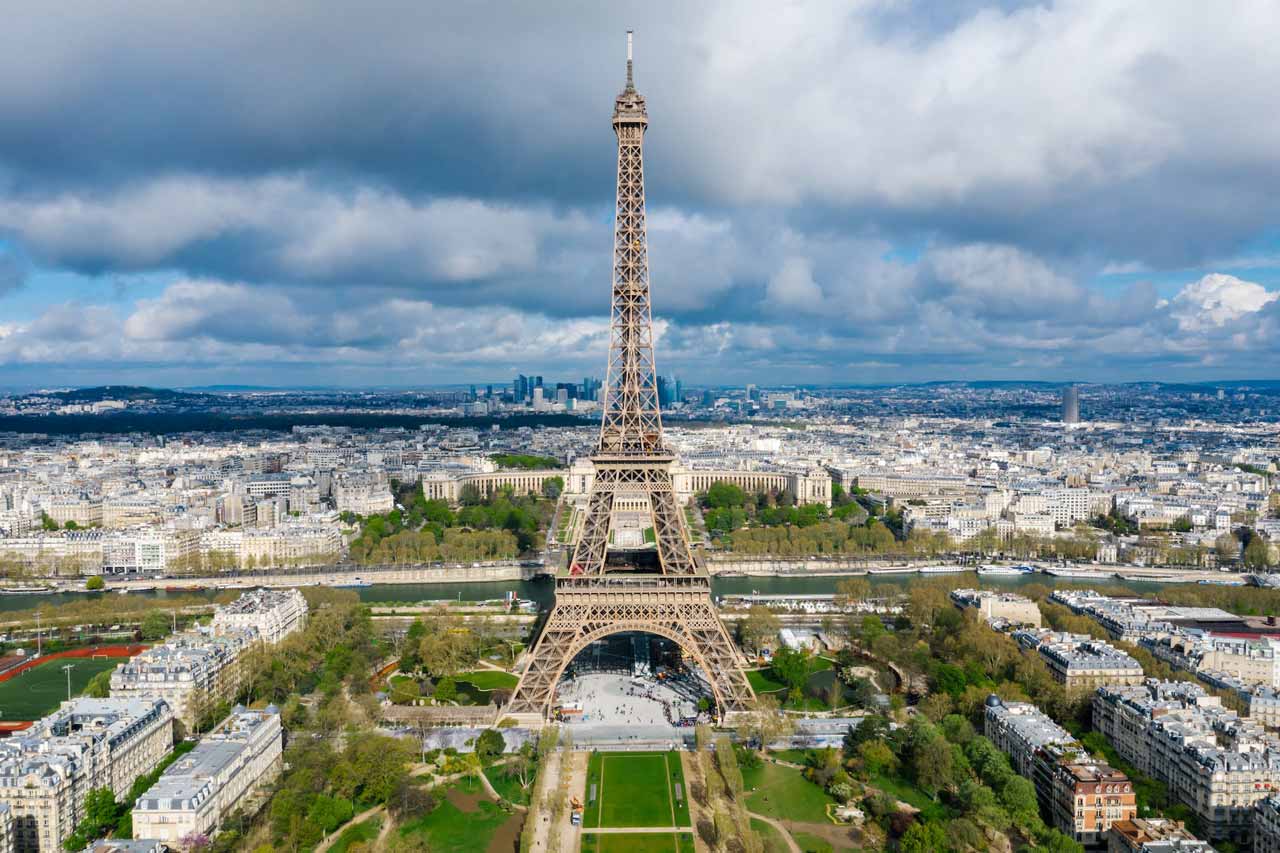
The tower’s base sits on four large masonry piers, each with walls 16 feet (5 meters) thick. From the base, the tower’s four columns rise vertically for 177 feet (54 meters), where they curve inwards to meet, forming a large platform. The columns rise, narrowing as they go to the second platform and finally to the top platform with its campaign. The Eiffel Tower was the world’s tallest structure when completed in 1889, a title it held for 41 years until the completion of the Chrysler Building in New York City in 1930. Over its lifetime, it has also served as a radiotelegraph station, intercepted enemy radio communications during World War I, and broadcast radio and television signals. Today, the Eiffel Tower welcomes almost 7 million visitors a year, making it the most visited paid monument in the world.
What architectural style is most prominent in the Eiffel Tower?
The most prominent architectural style of the Eiffel Tower is modern. The Eiffel Tower does not emulate styles of the past. There are no classical orders, arches, or ornate detailing. Instead, the design is purpose-driven, with four immense arched legs tapering to form a single, soaring tower. Eiffel incorporated structure and aesthetics, designing with an eye on visual impact. The tower’s silhouette, like its materials, is entirely modern, free from historical referencing. Even its color would have been unusual at the time, contrasting with stone buildings in shades of brown. The Eiffel Tower signified a new wave of architectural and engineering prowess. Its radical shape and materiality made it a modernist icon.
What structural engineering principles are employed in the construction of the Eiffel Tower?
The Eiffel Tower employs several key structural engineering principles in its design and construction. The tower is made entirely of wrought iron, which Gustave Eiffel chose for its strength, durability, and his confidence in working with the material. Steel was avoided due to its higher cost at the time. The tower acts primarily as a cantilever structure to resist wind loads rather than vertical dead loads. This makes it tall but lightweight relative to a pure vertical column design. The structure consists of four lattice columns connected by diagonal bracing, with additional horizontal bracing at various levels. A critical ratio was analyzed to determine whether wind or dead loads dominated the design. The tower was found to be controlled by wind, confirming its categorization as a cantilever. This allowed the specialized design to account for its height’s considerable lateral wind forces. The foundation was critical to resist overturning moments and provide stability. It consists of four massive masonry piers sunk deep into the ground. The 18,000 metallic pieces were pre-fabricated in Eiffel’s workshops to enable assembly on-site. Parts were designed to fit together precisely and not exceed 3 tons for manageable installation. This modular approach was vital in helping rapid on-site construction.
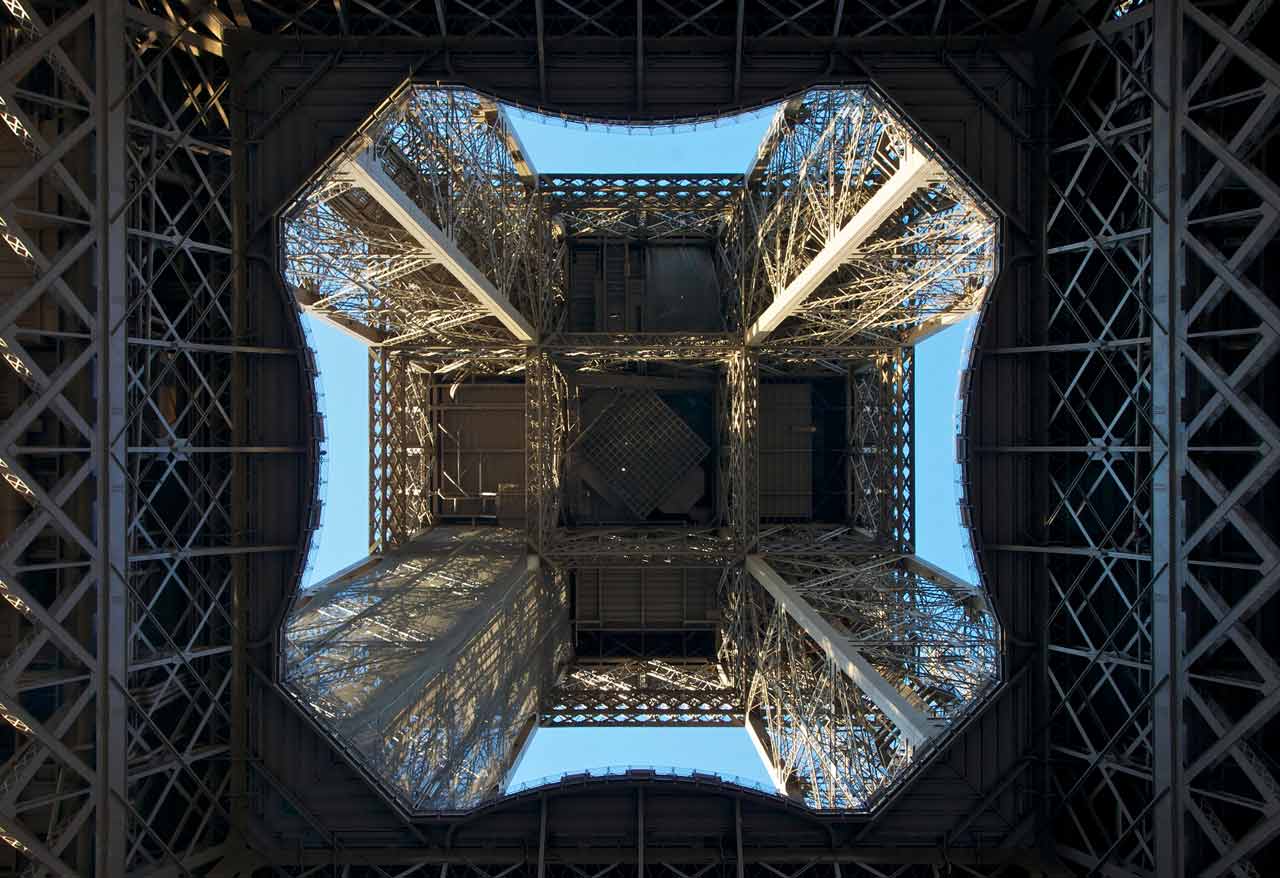
Who designed the Eiffel Tower?
Alexandre Gustave designed the Eiffel Tower. The tower was not only the brainchild of Gustave Eiffel alone, but it was also a collaborative effort. The Gustave team includes engineers Maurice Koechlin, Emile Nouguier, and architect Stephen Sauvestre. The original mind behind the tower’s conceptual sketches was Koechlin, who proposed the now-famous arch shape and lattice structure. Nouguier played a crucial role in refining these plans, focusing on the tower’s dimensions and structural integrity. To ensure the tower’s aesthetic appeal and public approval, Sauvestre was brought in, contributing significant design elements like the grand arches at the base and decorative details on the upper levels. For more insights on the roles of architects and interior designers, visit Architect vs Interior Designers. This collective endeavor began in 1884, sparked by a French government competition for a centerpiece for the 1889 World’s Fair. Eiffel’s firm, known for its expertise in metal structures, purchased Koechlin’s initial concept. Eiffel, a respected figure in bridge building, played a pivotal role in overseeing the project and shaping the final design, although he did not create the initial drawings himself. The collaboration of Koechlin, Nouguier, and Sauvestre under Eiffel’s supervision led to the final plans. Over two years, more than 250 workers assembled 18,000 iron pieces, bringing the team’s vision to life.
What are the historical design influences visible in the Eiffel Tower?
The Latting Observatory influenced the historical design of the Eiffel Tower in New York City. It originated by Maurice Koechlin and Emile Nouguier, two senior engineers working for Gustave Eiffel’s company, after discussing a suitable centerpiece for the 1889 Exposition Universelle. Gustave Eiffel then brought in French architect Stephen Sauvestre to refine the design and improve its appearance to gain public acceptance. The result marked a clear departure from the Neo-Gothic, Neo-Renaissance, and Neo-Baroque architectural styles prevalent in Paris at the time. Instead, the Eiffel Tower embraced modern materials like iron and a radical design enabled by new engineering knowledge. The Eiffel Tower was built rapidly with prefabricated iron parts made in Eiffel’s factory. Its construction incorporated some of the most advanced techniques available at the time, like using compressed air devices to install the foundations.
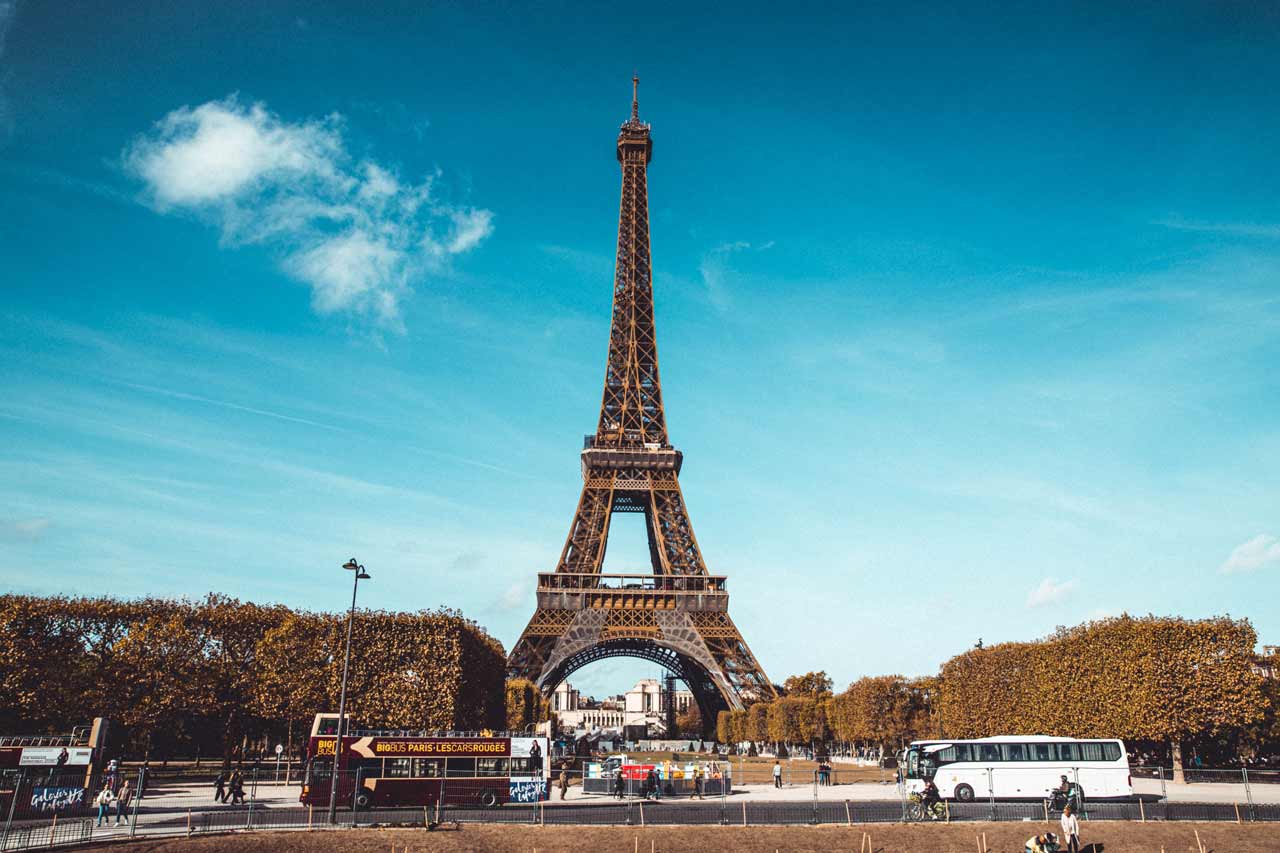
How has the Eiffel Tower influenced the design of other buildings in France?
The Eiffel Tower influenced the design of other buildings in France by demonstrating possibilities for metal structures, engineering principles, and creative shapes enabled by technology. Firstly, metal could be used for pleasing buildings, not just industrial structures. The Eiffel Tower popularized iron and glass for establishments aiming to appear light and airy. For example, the Printemps department store in Paris rebuilt its facade in the early 1900s to prominently display its modern metallic frame in an open style reminiscent of the Eiffel Tower. Secondly, the influence also reached overseas, such as inspiring the design of the skeletal steel frame of the Statue of Liberty. The Eiffel Tower also demonstrated the architectural possibilities enabled by advances in engineering. As architects saw the solid yet delicate tower withstand wind and weather, they gained confidence in new structural designs using metal. This directly enabled new building shapes in the 20th century, especially skyscrapers. Lastly, The Eiffel Tower inspired buildings that aimed to serve as iconic centerpieces of events, similar to the tower’s original purpose for the 1889 World’s Fair. Later world fairs featured pavilions and observation towers employing modern materials and engineering approaches. Even the design of the Centre Pompidou, with its visible skeletal frame, can be seen as a descendant of the Eiffel Tower’s groundbreaking style. From train stations to museums to skyscrapers, the tower’s influence can be seen in metallic buildings all over the country, aiming to balance aesthetics and structural creativity.
What purpose does the Eiffel Tower serve and how does the design help?
The Eiffel Tower serves as the entrance arch and centerpiece of the 1889 World’s Fair in Paris, held to commemorate the French Revolution’s centennial. The design took advantage of a new understanding of the strength of arches and trusses to support great heights without collapsing. After proving popular at the 1889 fair, the tower was kept as a radiotelegraph station and later began hosting broadcast antennas for radio and television signals across Paris. Its height made it the perfect location to transmit signals across the city and surrounding areas. Today, the Eiffel Tower’s original purpose shifts between tourism, communications, and symbolism. It remains the most visited paid monument globally, with over 7 million visitors per year who ascend the tower for panoramic city views. Broadcast antennae and other communications equipment continue to adorn its pinnacle.
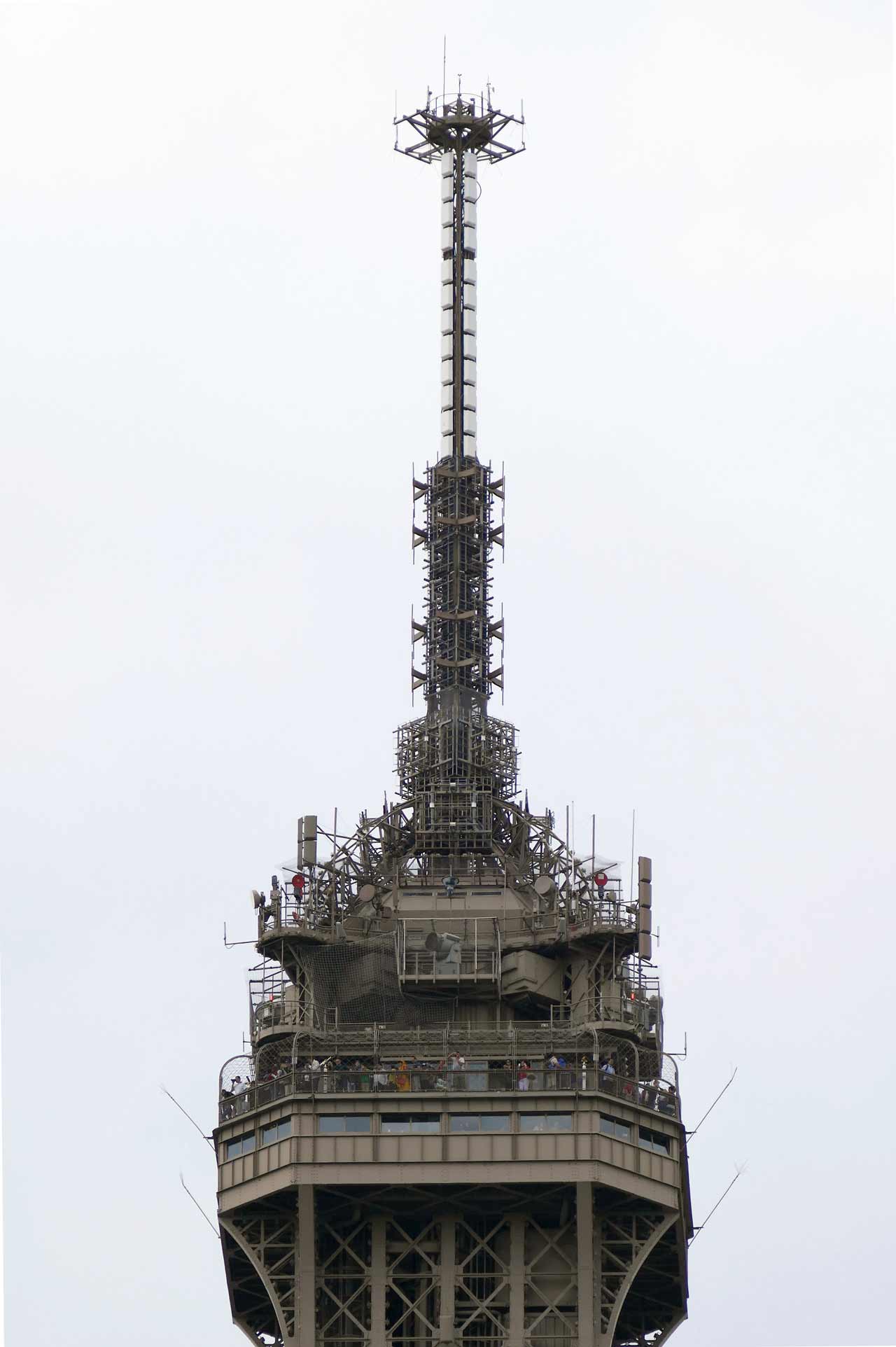
How is the Eiffel Tower maintained?
The Eiffel Tower undergoes regular maintenance to ensure its longevity and safety. Firstly, the entire tower is repainted by hand every seven years to prevent rust. Around 25 painters work for 15-18 months to strip old paint, clean the iron, apply rust-proofing, and repaint the tower using traditional brushes. The building has been repainted 19 times since its construction in 1889. Secondly. ongoing cleaning and restoration is done annually with large amounts of supplies – 4 tons of wipes, 25,000 garbage bags, 10,000 detergents, and 105 gallons of metal cleaning solution. Lastly, after terror attacks in Paris, temporary barriers were erected around the tower in 2016 and are now being replaced with more permanent fortifications costing $37 million (€35 million, £31 million). These include 2.56-inch (6.5 cm) thick bulletproof glass walls on two sides, with 10.6 feet (3.24 meters) high metal barriers on the other sides to prevent vehicle attacks. There are also plans for a renovation ahead of the 2024 Paris Olympics, including facilities, infrastructure, and visitor experience upgrades. However, reports have suggested the tower is in poor condition underneath the surface, with extensive rusting that requires repairs beyond just repainting.
How does the Eiffel Tower reflect cultural and contextual relevance in their design?
The Eiffel Tower was designed to reflect cultural and contextual relevance in Paris in several ways. Firstly, it was created as the entrance gateway to the 1889 World’s Fair, held in celebration of the 100th anniversary of the French Revolution. As such, it was intended to showcase French industrial talent and prowess internationally. Secondly, the lattice ironwork design of the tower demonstrated the significant advances in metal engineering and construction of the time. As stated in the documents, “a symbol of technological prowess, at the end of the 19th Century, it was a demonstration of French engineering personified by Gustave Eiffel.” Its iconic design thus directly reflected the engineering capabilities and aesthetics of late 19th-century France. Lastly, the tower incorporates the names of 72 prominent French scientists, engineers, and scholars around its base, honoring the nation’s intellectual and industrial achievements by integrating them into its framework.
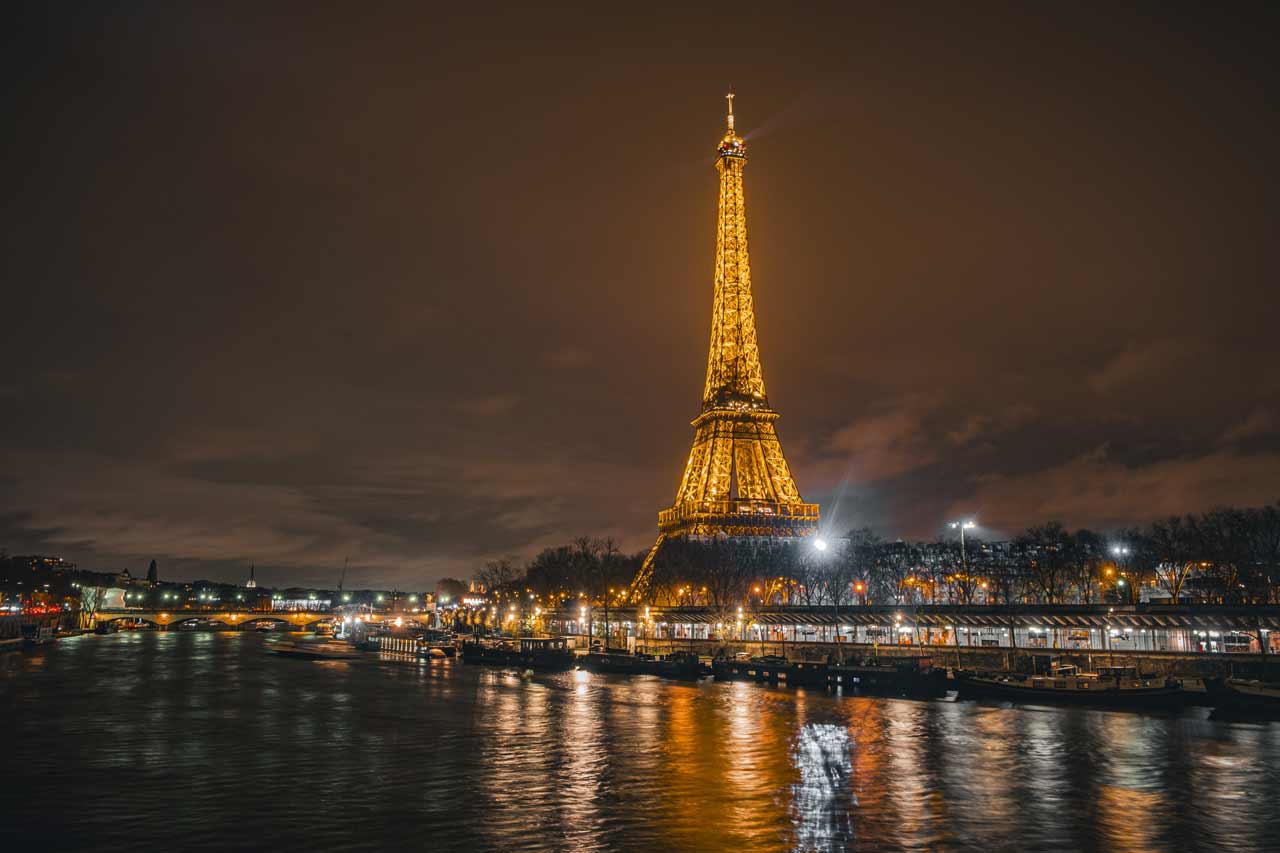
What architectural trend or movement does the Eiffel Tower represent?
The Eiffel Tower represents a transition from traditional architecture to modern architecture. When it was first proposed and constructed, its design was highly controversial and was criticized by many contemporary artists and architects. It symbolized modern architecture through its innovative use of materials, lack of decoration, and its form following function. The Eiffel Tower departed from past architectural styles focused on stone buildings inspired by history, such as Neoclassical or Gothic Revival architecture. Instead, it embraced modern materials, especially iron, made possible by the Industrial Revolution and new engineering knowledge. The tower took advantage of iron’s strength and ability to be prefabricated into pieces offsite. This allowed rapid onsite assembly of a taller structure than traditional stone buildings. In addition, the tower lacked historical decorative elements seen in Neoclassical or Baroque buildings.
What are the challenges faced during the restoration of the Eiffel Tower?
The Eiffel Tower is undergoing its largest restoration project in 40 years, focusing on three major areas. Firstly, combating corrosion and rust is a pressing challenge. Confidential reports cited in multiple articles reveal that despite a 60 million euro paint job underway for the 2024 Paris Olympics, the Tower structure is riddled with rust and in poor condition. The planned paint job will only treat 5% of the tower rather than the intended 30% due to delays and the discovery of lead in the old paint. Secondly, visitor experience and traffic flow also need improvement. There are plans to redesign the layout and features of the area surrounding the Tower through an international design competition, to be completed by 2023. Thirdly, modernizing dated infrastructure is needed to support growing visitor numbers. 300 million euros have been dedicated to renovating and improving the Tower’s visitor reception and facilities. It is challenging to balance these restoration needs with keeping the Tower open to its 6 million annual visitors. Closing the landmark fully for an extended period risks considerable lost tourism revenue, yet reports warn the Tower urgently requires full repairs. Regular restoration work has also been critical. The latest major projects aim to ensure this iconic monument can safely withstand many more decades of public access. However, if mismanaged, experts caution the Tower’s namesake would suffer “a heart attack” observing its current condition beneath the surface.

How does the Eiffel Tower comply with contemporary safety and accessibility standards?
The Eiffel Tower has implemented various measures over the years to improve accessibility and safety for all visitors while preserving the integrity of the historic landmark. Firstly, for visitors with disabilities, the Tower has installed wheelchair access ramps, wider elevators to accommodate wheelchairs, induction loops at ticket counters for the hearing impaired, and accessible restrooms and buffet counters on the lower floors. The top floor is not wheelchair accessible due to the stairs and narrow passageways that would make evacuation difficult, but visitors with full mobility can access the top via the elevator. Secondly, a perimeter fence with bulletproof glass walls was erected around the base of the Tower in 2018 to prevent vehicle attacks. Temporary barriers were also set up in 2016, though the new enclosure is designed to blend into the landscape better. There is a constant security presence on-site as well. Safety regulations limit the number of visitors on the upper floors. Lastly, the tower functionality has been modernized while retaining historical elements like the original wood elevator cabins. Ongoing restoration work, like the current 40-year renovation underway, allows the Tower’s structure, facilities, and visitor capacity to be evaluated and upgraded to meet contemporary standards. However, some accessibility and safety features cannot be added without compromising the Tower’s integral historic design.
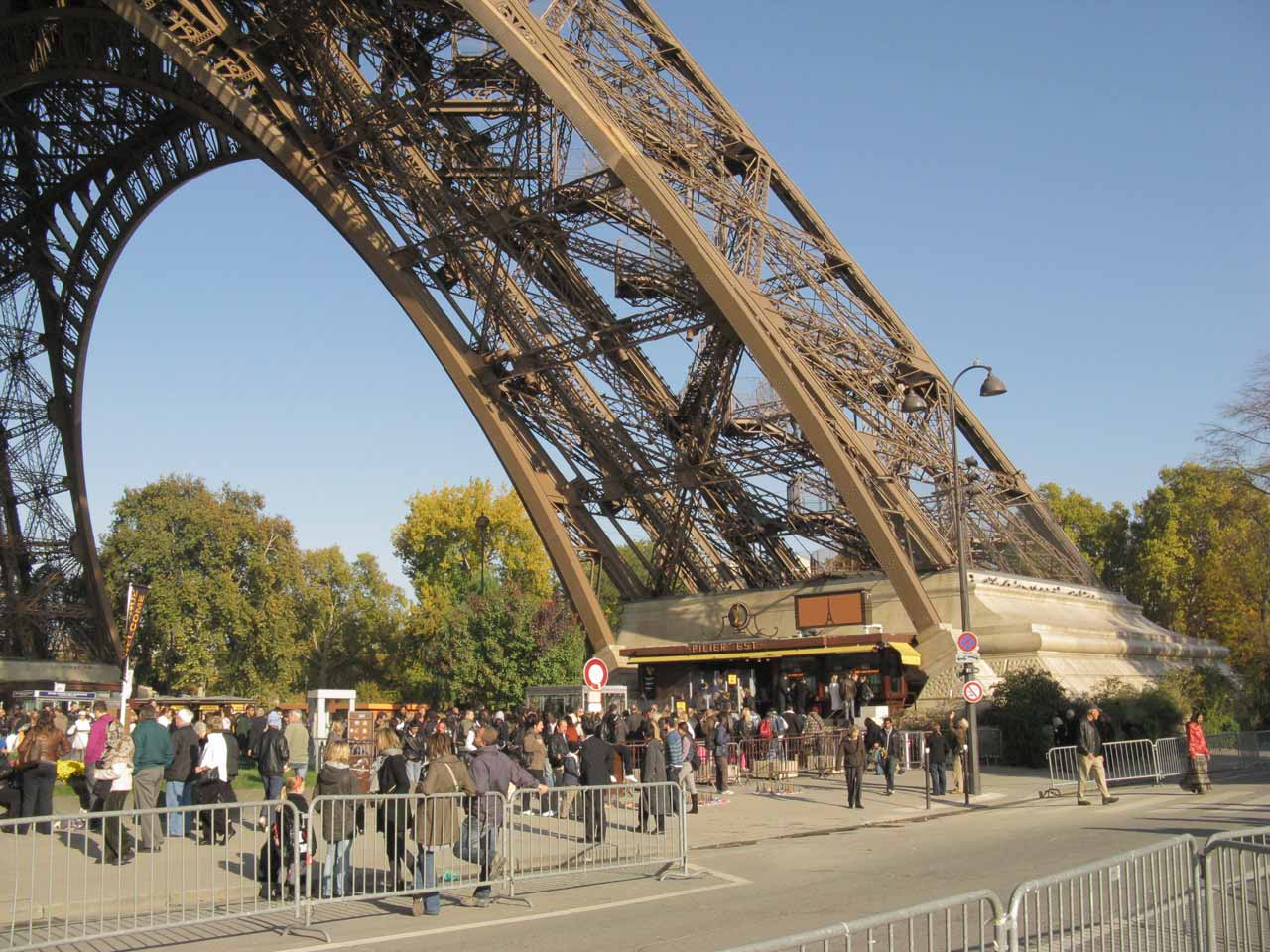
Are there any specific tours for architects or architecture enthusiasts visiting the Eiffel Tower?
Yes, the Eiffel Tower offers several specialized tour options catering to architects, engineers, and architecture enthusiasts. Small group tours led by expert guides provide behind-the-scenes insights into the Tower’s iconic design. One top choice is the 2-hour “Architecture of the Eiffel Tower” guided tour, ideal for ten or fewer guests per group. The tour dives into this architectural feat’s structural elements, statistics, and little-known facts. For a more hands-on experience, opt for a climbing tour with architectural commentary included, like the 4-hour “Eiffel Tower Climbing Experience.” Context Travel offers a 3-hour walking tour of Paris’ modernist architecture. Led by an architect guide, highlights include Le Corbusier and Guimard structures plus exterior views of the Eiffel Tower, discussing its architecture and role in spurring modern building techniques in the early 20th century.
What lessons can architects learn from the design and construction of the Eiffel Tower?
The Eiffel Tower has key lessons architects can take from considering how a structure will interact with the details. Firstly, Eiffel recognized the impact wind would have. Architects must carefully model how wind and other environmental factors like rain and temperature changes affect a building at various scales. Secondly, using new building materials presented opportunities and challenges that Eiffel navigated skillfully. Architects could learn new building materials that enable innovative designs if adequately tested and proven. Eiffel’s use of iron showed that testing its strength could create elegant tall structures previously impossible with other materials. Architects should explore innovative materials and not be limited by preconceptions. Thirdly, the accessibility and practical features enhance structures’ utility and popularity. Eiffel included elevators to make the tower accessible to the public, not just the wealthy, garnering immense interest. Eiffel encouraged the scientific use of the building to demonstrate its usefulness and save it from demolition, showing architects the importance of finding multifaceted purposes for their designs. Lastly, Eiffel had to prove through testing and the tower’s eventual success that iron could be used to create tall, elegant structures. This opened the door for new materials in architecture. It is a lesson that architects should explore innovative materials and not be limited by preconceptions of what different building technologies can achieve.
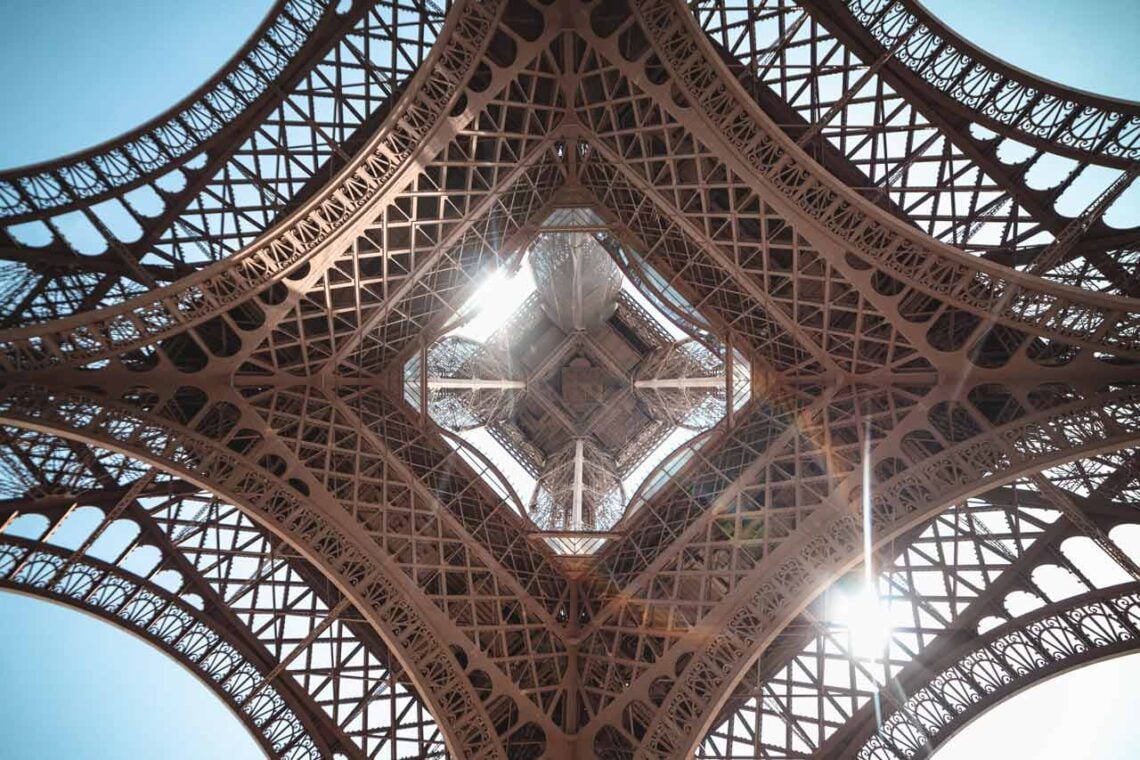
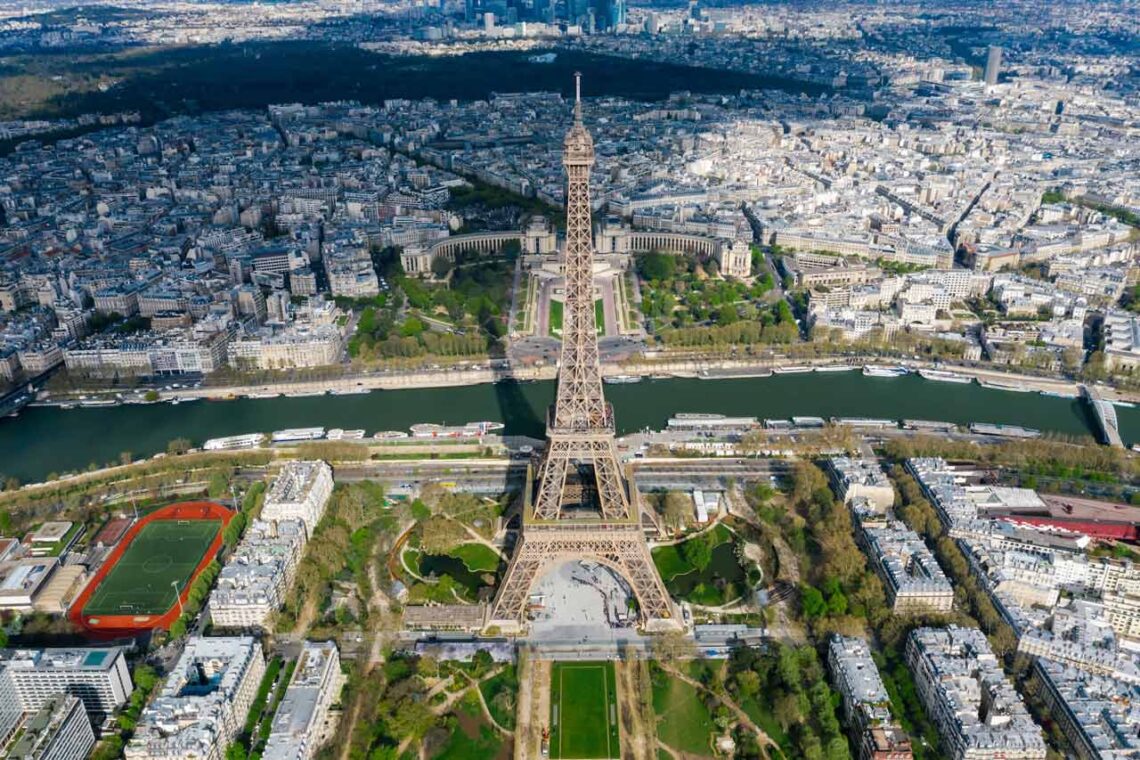
What are the best architectural landmarks in France to visit as an architect?
Listed below are the best architectural landmarks to visit as an architect:
- Eiffel Tower, Paris: The Eiffel Tower is a must-visit for any architect. Completed in 1889 for the Exposition Universelle (World’s Fair), it was designed by Gustave Eiffel and his team. The Tower has become a global icon of France and one of the most recognized structures worldwide. The Eiffel Tower also offers an insight into the transformative period of architecture and engineering during the late 19th century. The structure’s three levels, accessible by stairs and elevators, offer panoramic views of Paris, making it not just an architectural landmark but also a unique observation point of the city’s layout and design.
- Notre-Dame Cathedral, Paris: Notre-Dame Cathedral is a must-visit for architects. Its construction began in 1163 and continued over several centuries, showcasing the evolution of the Gothic architectural style. Notre Dame’s flying buttresses, ribbed vaults, and gargoyles are notable features. The cathedral’s stained glass windows, particularly the three rose windows, are achievements in glasswork. The 2019 fire led to significant damage to the restoration and preservation of historic structures, making it a contemporary case study in architectural restoration and conservation.
- Palace of Versailles, Versailles: The Palace of Versailles is a paramount example of French Baroque architecture, making it a compelling site for architects. The palace’s architecture is characterized by classical French elements, grandiose spaces, and elaborate ornamentation. The Hall of Mirrors, the King’s Grand Apartment, and the geometrically arranged gardens highlight the era’s artistic and architectural tastes. Versailles not only showcases the architectural styles of the 17th and 18th centuries but also reflects the political and cultural power of France during the reign of Louis XIV.
- Louvre Pyramid, Paris: The Louvre Pyramid, designed by architect I.M. Pei, is a modern architectural landmark that contrasts the historic Louvre Palace. Completed in 1989, the Pyramid serves as the main entrance to the Louvre Museum and is a prime example of contemporary architectural intervention in a historical context. Made of glass and metal, it exemplifies modern materials and minimalist design, while its form pays homage to historical precedents.
- Millau Viaduct, Millau: The Millau Viaduct is a landmark of modern engineering and architecture, designed by the French structural engineer Michel Virlogeux and British architect Norman Foster. The viaduct is a cable-stayed bridge that spans the Tarn River valley, blending with its natural environment. Its sleek and minimalistic design presents an integration of large-scale infrastructure into a sensitive landscape.


